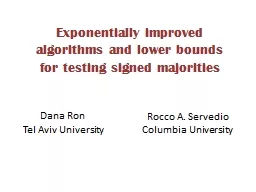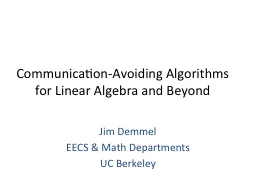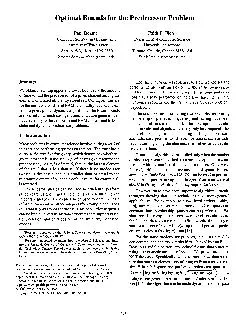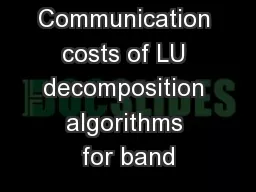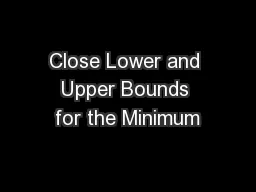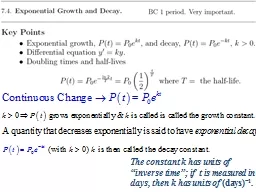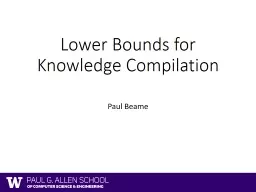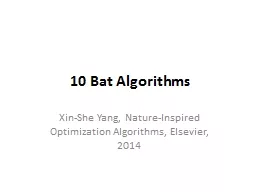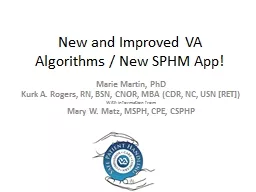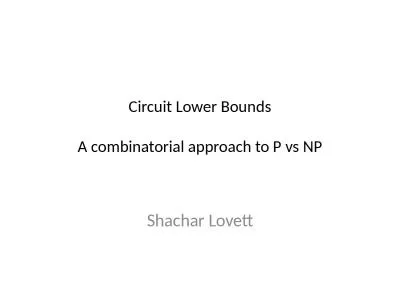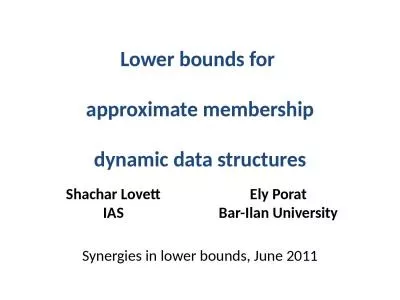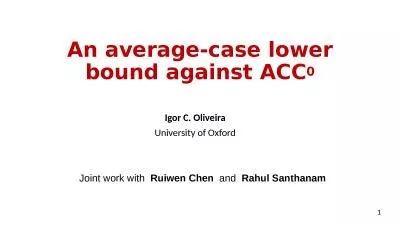PPT-Exponentially improved algorithms and lower bounds
Author : phoebe-click | Published Date : 2018-02-15
for testing signed majorities Dana Ron Tel Aviv University Rocco A Servedio Columbia University Testing properties of Boolean functions the basics Let C be a class
Presentation Embed Code
Download Presentation
Download Presentation The PPT/PDF document "Exponentially improved algorithms and l..." is the property of its rightful owner. Permission is granted to download and print the materials on this website for personal, non-commercial use only, and to display it on your personal computer provided you do not modify the materials and that you retain all copyright notices contained in the materials. By downloading content from our website, you accept the terms of this agreement.
Exponentially improved algorithms and lower bounds: Transcript
Download Rules Of Document
"Exponentially improved algorithms and lower bounds"The content belongs to its owner. You may download and print it for personal use, without modification, and keep all copyright notices. By downloading, you agree to these terms.
Related Documents

